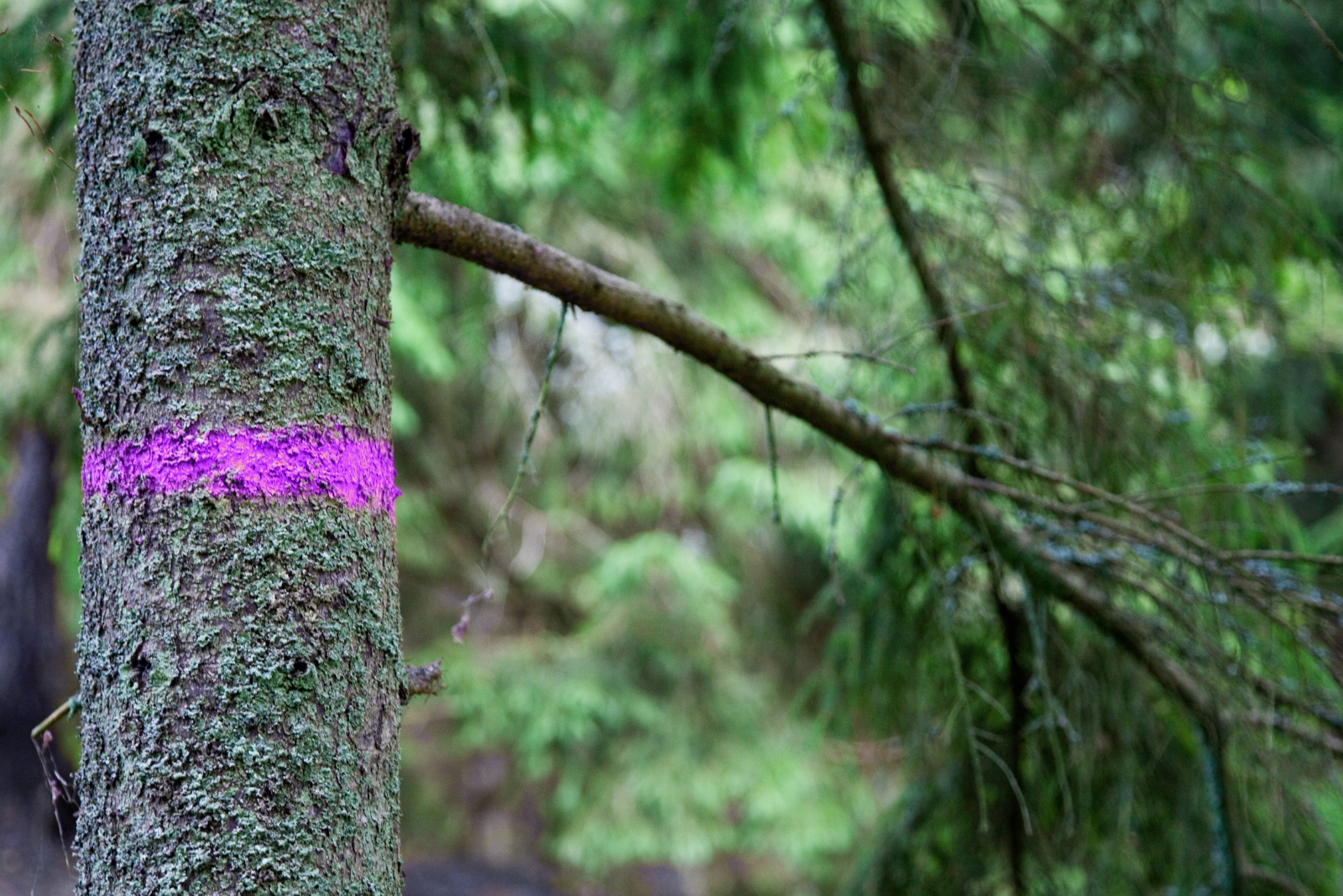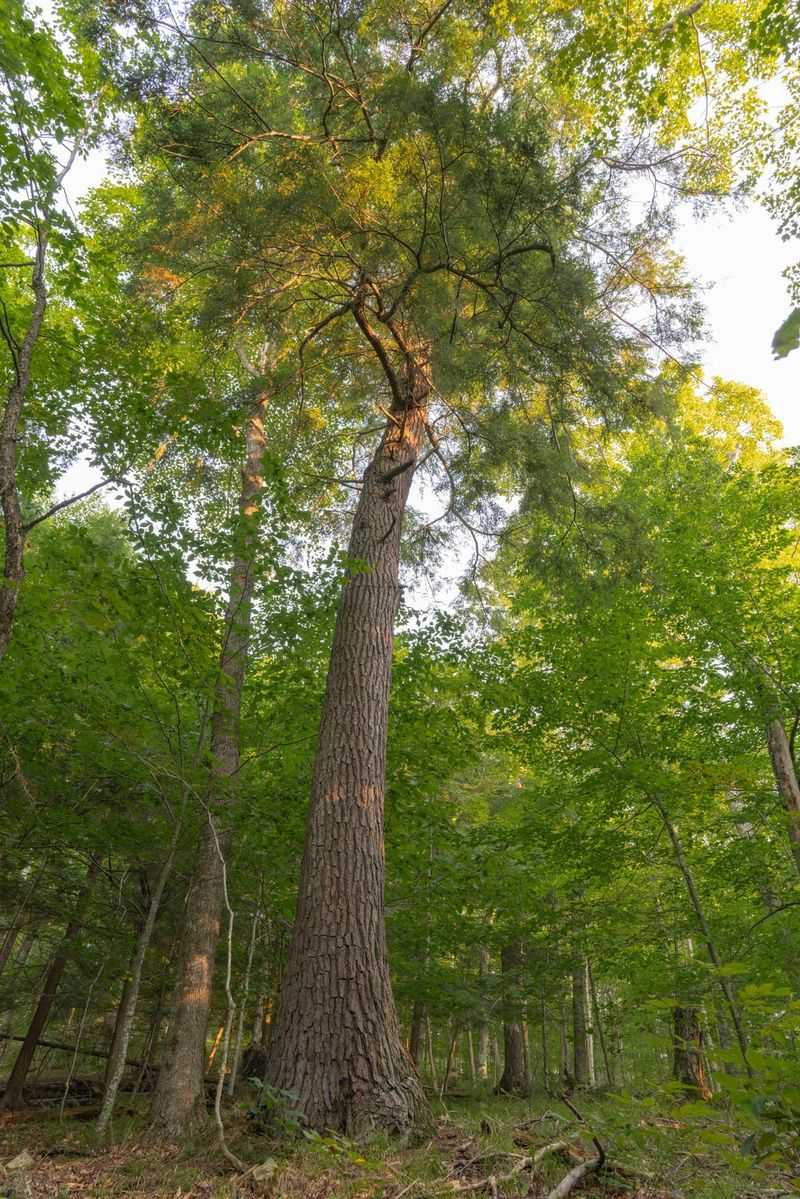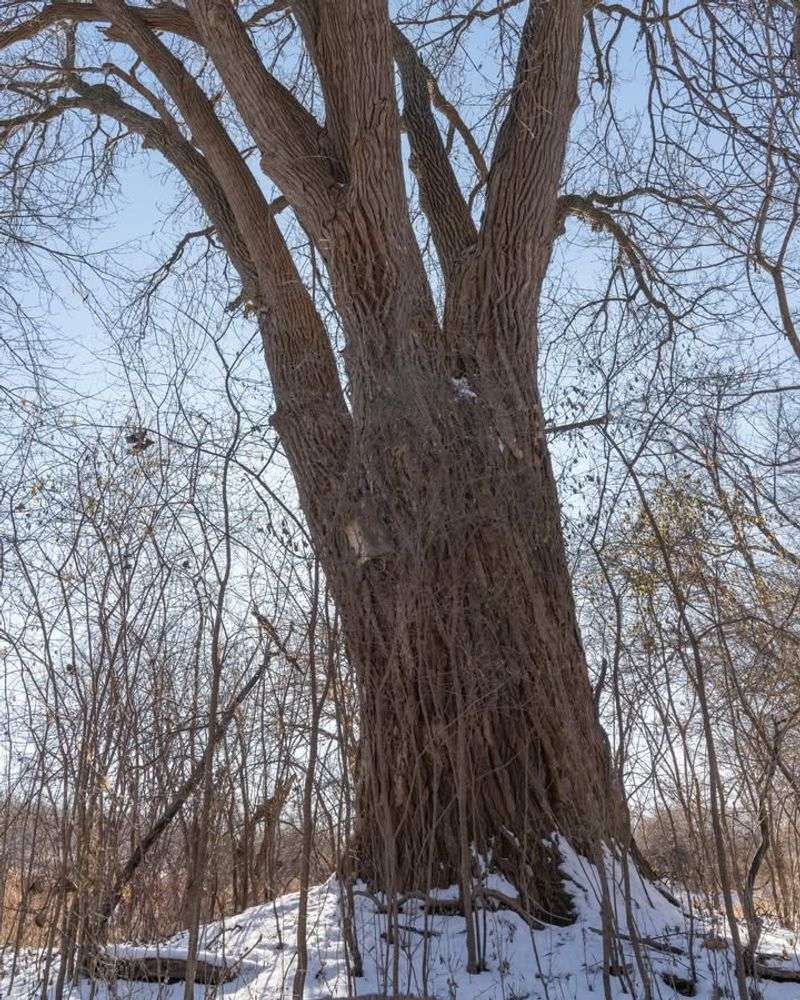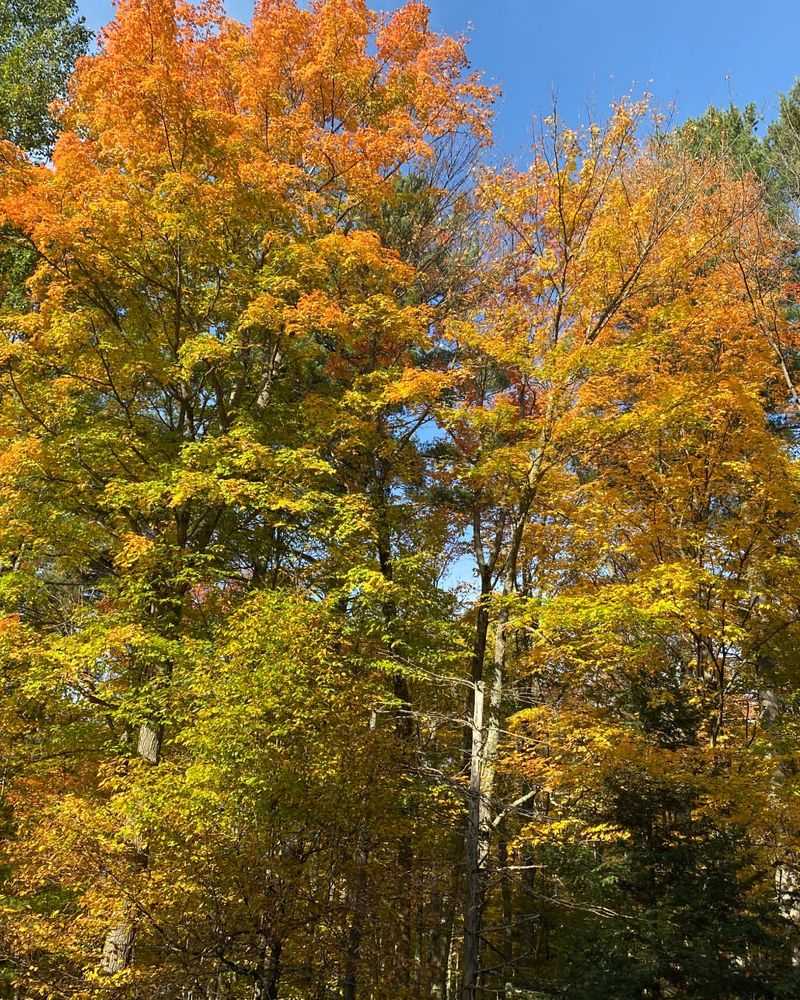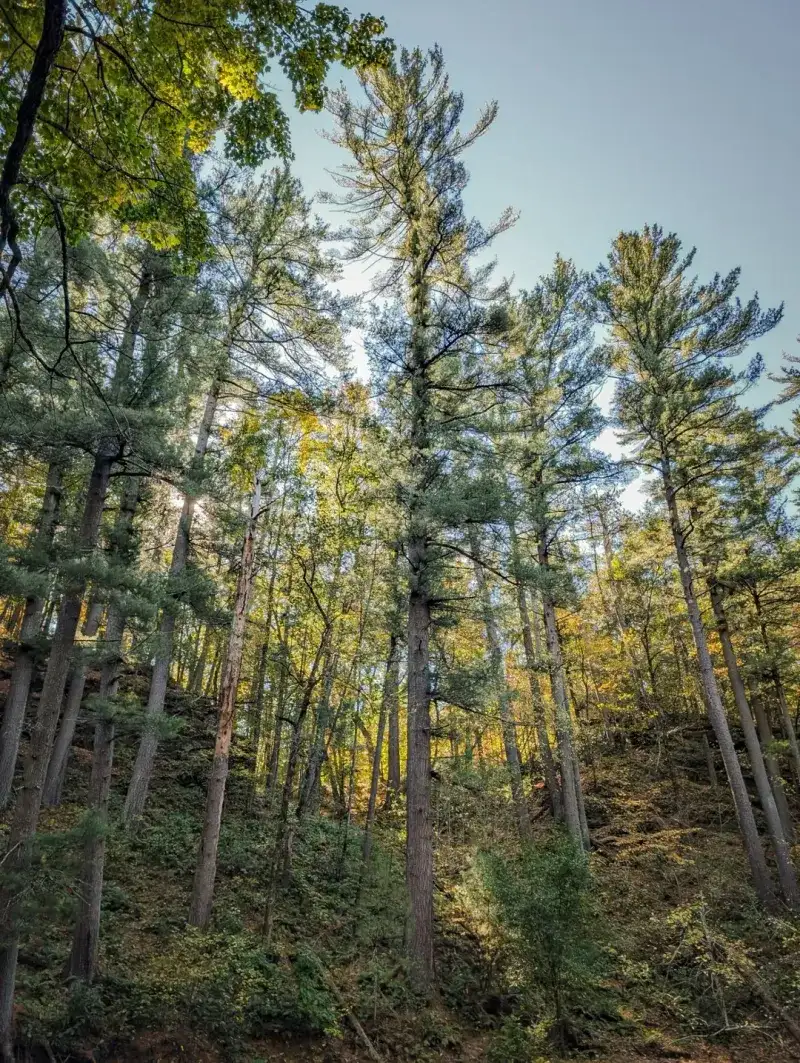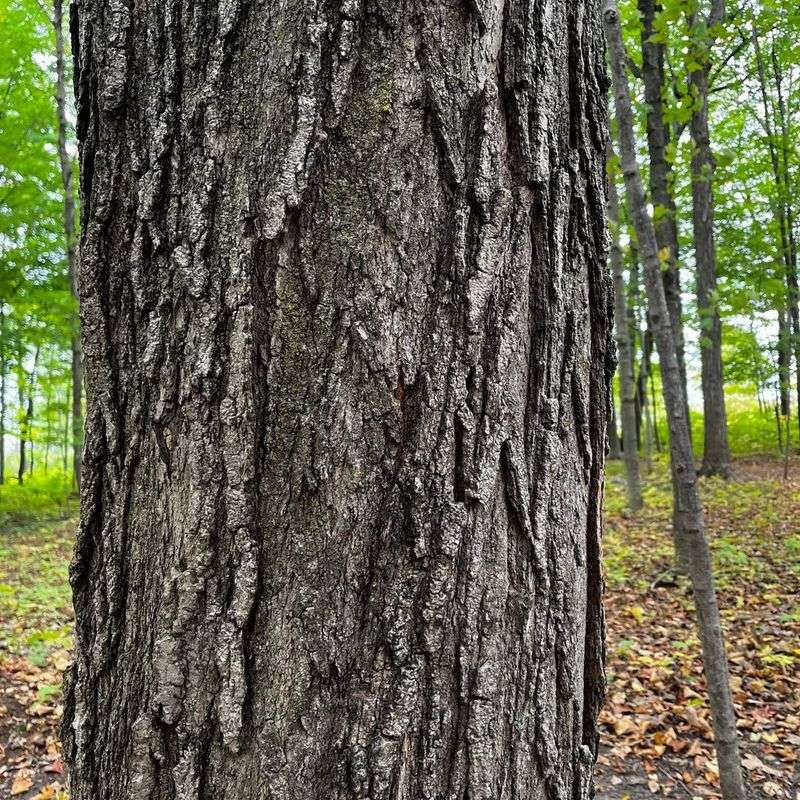Purple marks on Wisconsin trees can be surprising if you’re not used to seeing them. I remember spotting a few on a walk and wondering who went around with a paintbrush.
Turns out, those markings actually signal something important about the land and how it can be used. Once you know the meaning behind them, they make a lot more sense.
1. Property Boundary Markers Signal No Trespassing
Landowners across Wisconsin use purple paint instead of signs to mark their property lines. The color serves as a legal warning that you’re entering private land without permission.
State law recognizes these purple marks as official no-trespassing notices. Property owners find painting trees cheaper and longer-lasting than posting metal signs that rust or fall down.
When you spot purple paint in the woods, respect the boundary and turn back unless you have permission to enter.
2. Cost-Effective Alternative to Traditional Signage
Buying and maintaining dozens of metal or plastic signs gets expensive fast for Wisconsin landowners with large properties. A single can of purple paint costs less and covers many trees.
Weather destroys traditional signs within a few years, forcing owners to replace them constantly. Paint lasts much longer and stays visible through rain, snow, and harsh Wisconsin winters.
Many farmers and forest owners switched to purple marking because it saves money and time while still protecting their land.
3. Legal Protection Under Wisconsin State Law
Wisconsin officially adopted the purple paint law to give property owners legal protection. Courts recognize these marks just like traditional posted signs when prosecuting trespassing cases.
The law specifies exact requirements: marks must be vertical lines at least eight inches long, placed between three and five feet off the ground. They should appear on trees or posts at main entry points and along boundaries.
Violating purple-marked boundaries in Wisconsin can result in fines and criminal charges.
4. Protection for Hunting Grounds and Game Management
Many Wisconsin hunters and wildlife managers paint purple marks to protect their carefully managed hunting grounds. Unauthorized hunters can disrupt game patterns and create dangerous situations.
Landowners invest time and money creating ideal habitats for deer, turkey, and other game animals. Purple boundaries help keep these areas exclusive for permitted hunters only.
Respecting these marks ensures everyone stays safe and landowners maintain control over their wildlife management efforts throughout hunting season.
5. Preventing Liability from Unauthorized Visitors
Landowners worry about getting sued if someone gets hurt on their property without permission. Purple paint marks help establish that visitors entered without authorization, reducing owner liability.
When accidents happen on clearly marked private land in Wisconsin, owners have stronger legal protection. The purple paint proves they took reasonable steps to warn people away.
This simple marking system protects both landowners from lawsuits and visitors from wandering into potentially dangerous areas they shouldn’t explore.
6. Preserving Sensitive Environmental Areas
Some Wisconsin property owners use purple marks to protect fragile ecosystems on their land. Wetlands, rare plant habitats, and nesting areas need protection from foot traffic and disturbance.
Environmental enthusiasts mark boundaries around sensitive zones to prevent accidental damage from hikers or recreational users. Even well-meaning visitors can harm delicate habitats without realizing it.
These conservation-minded landowners aren’t being unfriendly—they’re safeguarding important natural areas for future generations to enjoy from appropriate distances.
7. Reducing Vandalism and Theft on Rural Properties
Rural Wisconsin landowners face problems with people stealing equipment, dumping trash, or vandalizing buildings on remote properties. Purple paint warnings discourage trespassers before they cause damage.
The visible marks remind potential wrongdoers that someone owns and monitors the land. Many criminals avoid clearly marked properties because they know owners take security seriously.
Farmers and rural residents throughout Wisconsin report fewer incidents after painting purple boundaries around their land and outbuildings.

